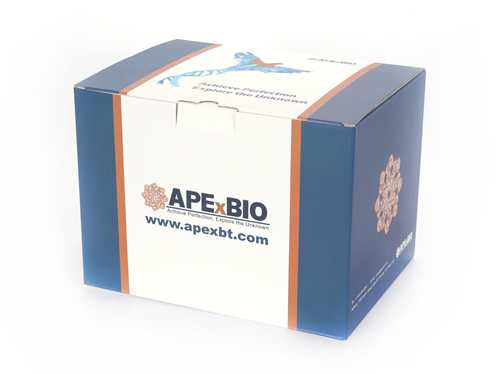Recombinant Human Dkk1
Dickkopf related protein 1 (Dkk-1) is the founding member of the Dickkopf family of proteins that includes Dkk-1, -2, -3, -4, and a related protein, Soggy [1, 2]. Dkk proteins are secreted proteins that contain two conserved cysteine-rich domains separated by a linker region. Each domain contains ten cysteine residues [1-3]. Mature human Dkk-1 is a 40 kDa glycosylated protein that shares 86%, 87%, 90% and 91% aa sequence identity with mouse, rat, rabbit and bovine Dkk-1, respectively. It also shares 42% and 36% aa identity with human Dkk-2 and Dkk-4, respectively. Dkk-1 and Dkk-4 are well documented antagonists of the canonical Wnt signaling pathway [1, 2]. This pathway is activated by Wnt engagement of a receptor complex composed of the Frizzled proteins and one of two low-density lipoprotein receptor-related proteins, LRP5 or LRP6 [4]. Dkk-1 antagonizes Wnt by forming ternary complexes of LRP5/6 with Kremen1 or Kremen2 [4, 5]. Dkk-1/LRP6/Krm2 complex internalization has been shown to down-regulate Wnt signaling [4, 5]. Dkk-1 is expressed throughout development and antagonizes Wnt-7a during limb development [6, 7]. Other sites of expression include developing neurons, hair follicles and the retina of the eye [8, 9]. The balance between Wnt signaling and Dkk-1 inhibition is critical for bone formation and homeostasis [10]. Insufficient or excess Dkk-1 activity in bone results in increased or decreased bone density, respectively [8, 11]. In adults, Dkk-1 is expressed in osteoblasts and osteocytes, and neurons. Cerebral ischemia induces Dkk-1 expression, which contributes to neuronal cell death [12].
Reference
[1]. Krupnik, V.E. et al. (1999) Gene 238:301.
[2]. Niehrs, C. (2006) Oncogene 25:7469.
[3]. Bullock, C.M. et al. (2004) Mol. Pharmacol. 65:582.
[4]. Mao, B. et al. (2001) Nature 411:321.
[5]. Mao, B. et al. (2002) Nature 417:664.
[6]. Kemp, C. et al. (2005) Dev. Dyn. 233:1064.
[7]. Adamska, M. et al. (2004) Dev. Biol. 272:134.
[8]. Li, J. et al. (2006) Bone 36:754.
[9]. Verani, R. et al. (2006) J. Neurochem. 101:242.
[10]. Pinzone, J.J. et al. (2009) Blood 113:517.
[11]. Morvan, F. et al. (2006) J. Bone Miner. Res. 21:934.
[12]. Cappuccio, I. et al. (2005) J. Neurosci. 25:2647.
|
Accession # |
O94907 |
|
Alternate Names |
Dickkopf-1; dickkopf-related protein 1; Dkk1; Dkk-1; hDkk-1; SKdickkopf-1 like |
|
Source |
Human embryonic kidney cell, HEK293-derived human Dkk1 protein |
|
Protein sequence |
Met 2-His 266 |
|
M.Wt |
26.6 kDa |
|
Appearance |
Solution protein. |
|
Stability & Storage |
Avoid repeated freeze-thaw cycles. It is recommended that the protein be aliquoted for optimal storage. 3 years from date of receipt, -20 to -70 °C as supplied. |
|
Concentration |
0. 2 mg/mL |
|
Formulation |
Dissolved in sterile PBS buffer. |
|
Reconstitution |
We recommend that this vial be briefly centrifuged prior to opening to bring the contents to the bottom. This solution can be diluted into other aqueous buffers. |
|
Biological Activity |
Measured by its ability to inhibit Wnt induced TCF reporter activity in HEK293 human embryonic kidney cells. The EC50 for this effect is approximately 1-8 ng/ml. |
|
Shipping Condition |
Shipping with dry ice. |
|
Handling |
Centrifuge the vial prior to opening. |
|
Usage |
For Research Use Only! Not to be used in humans. |
Quality Control & DataSheet
- View current batch:
-
Purity > 95%, determined by SDS-PAGE.
- Datasheet
Endotoxin: <0.010 EU per 1 ug of the protein by the LAL method.








